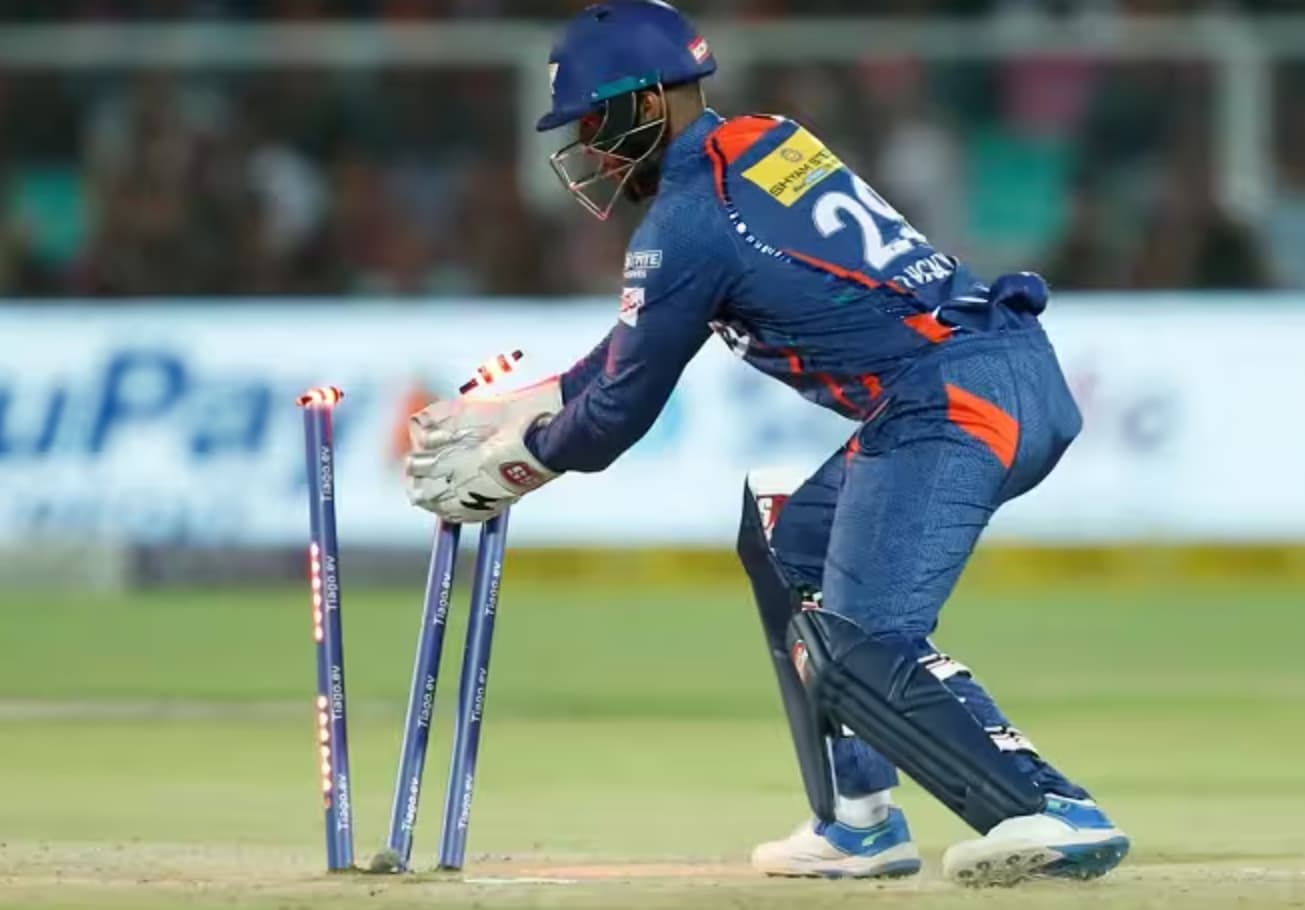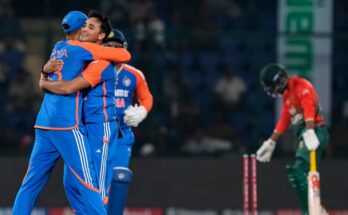Cricket has come a long way from its traditional roots, and nowhere is this more visible than in the Indian Premier League (IPL).
When you watch an IPL match today, you’ll notice something special about the stumps – they light up like Christmas trees whenever a player gets run out or stumped!
These aren’t your grandfather’s wooden stumps. They’re high-tech pieces of equipment that cost more than most people’s cars.
The question “How much do IPL LED stumps cost” often surprises cricket fans when they learn the answer.
These LED stumps are some of the most expensive accessories in modern cricket, with each set costing between ₹33 to ₹35 lakhs.
That’s right – lakhs, not thousands! But why are they so expensive? What makes them different from regular stumps? And how do they work?
At Match Legends, we’ve been researching and analyzing various aspects of cricket technology and costs to help fans understand the modern game better.
Our sports experts have studied everything from IPL franchise business models to player equipment costs, and LED stumps represent one of the most fascinating technological investments in cricket today.
How Much Do IPL LED Stumps Cost?

In this complete guide, we’ll break down everything you need to know about IPL LED stumps in simple terms.
Whether you’re a cricket fan curious about the technology or someone who just wants to understand what all the fuss is about, this article will give you all the answers.
We’ll explore their features, costs, technology, and much more – all explained in easy-to-understand language.
What Type of Stumps Are Used In The IPL?
The IPL uses LED stumps, which are completely different from the traditional wooden stumps you might see in local cricket matches. These modern stumps are like smart devices that can detect the smallest movements and light up instantly.
Key Features of IPL LED Stumps:
- Instant lighting – They flash within 1/1000th of a second when disturbed
- Smart sensors – Microprocessors detect when bales are removed
- Bright LED lights – Visible even in bright daylight
- Wireless technology – Send signals between stumps and bails
- Durable materials – Made from strong composite plastic, not wood
How Do They Work?
Think of these stumps like smart home devices. Each bail (the small pieces that sit on top of the stumps) has a tiny computer inside it called a microprocessor. When a bail gets knocked off, this computer immediately tells the stumps to light up. It’s so fast that it happens before your eyes can even register the movement!
The LED lights are not just for show – they help umpires make better decisions. In close run-out calls, it’s much easier to see when the stumps light up than to guess if a wooden bail moved slightly.
Traditional vs LED Stumps Comparison:
| Feature | Traditional Stumps | LED Stumps |
|---|---|---|
| Material | Wood | Composite plastic |
| Detection | Visual only | Automatic sensors |
| Cost | Under ₹5,000 | ₹33-35 lakhs |
| Response time | Human eye dependent | 1/1000th second |
| Durability | Can break easily | Impact resistant |
| Technology | None | LED + microprocessors |
The Cost Of IPL Stumps
Now let’s talk numbers. IPL LED stumps cost between ₹33 to ₹35 lakhs per set. To put this in perspective, that’s enough money to buy a luxury car or a decent apartment in many Indian cities!
What’s Included in One Set?
- 6 stumps (3 for each end of the pitch)
- 4 LED bails (2 for each end)
- Electronic base units
- Wireless transmitters
- Battery systems
- Control equipment
Cost Breakdown (Estimated):
| Component | Approximate Cost |
|---|---|
| LED Stumps (6 pieces) | ₹15-18 lakhs |
| Smart Bails (4 pieces) | ₹10-12 lakhs |
| Electronic systems | ₹5-7 lakhs |
| Maintenance & Setup | ₹3-5 lakhs |
| Total per set | ₹33-35 lakhs |
Important Note: The BCCI doesn’t buy these stumps outright. Instead, they lease them from the manufacturer for the entire IPL season. This is more cost-effective because:
- No maintenance worries – The company handles all repairs
- Latest technology – They get updated versions each year
- Multiple sets – They can use different sets for different matches
- Insurance coverage – Protected against damage or theft
Our research at Match Legends shows that this leasing model is similar to how IPL franchises manage their operational costs, focusing on performance rather than ownership of expensive equipment.
Comparison with Other Sports Equipment:
To understand how expensive these stumps are, here’s what else you could buy for ₹35 lakhs:
- 50 cricket bats used by international players
- 500 cricket balls are used in professional matches
- Complete ground equipment for a local cricket field
- Luxury cars like BMW or Mercedes
- Small apartments in many Indian cities
Match Legends has analyzed various cricket equipment costs, and LED stumps represent the highest-value individual equipment pieces in modern cricket, even more expensive than some players’ annual salaries in domestic leagues!
Why Are LED Wickets So Expensive?
You might wonder why these stumps cost so much. The answer lies in the advanced technology packed into what looks like simple cricket equipment. Let’s break down the reasons:
Advanced Sensor Technology
- Microprocessors – Each bail has a tiny computer inside
- Motion sensors – Detect the smallest movements
- Pressure sensors – Know when bails are properly seated
- Radio transmitters – Send wireless signals instantly
High-Quality Materials
Traditional stumps are made of wood and can break easily when hit by a fast ball. LED stumps are made from:
- Composite plastic – Stronger than wood
- Impact-resistant materials – Can handle 150+ kmph deliveries
- Weather-resistant coating – Work in rain or shine
- Special LED housing – Protects delicate electronics
Integration with Other Technologies
These stumps don’t work alone. They’re connected to:
- UltraEdge technology – For detecting edges
- Hawk-Eye system – For ball tracking
- DRS (Decision Review System) – For accurate decisions
- Broadcast systems – For TV replays
Manufacturing Complexity
Making these stumps is not simple:
- Specialized factories – Only a few companies can make them
- Quality testing – Each piece is tested multiple times
- Certification – Must meet international cricket standards
- Limited production – Not mass-produced like regular items
Research and Development Costs
The company that makes these stumps spent millions of dollars developing the technology:
- Years of research – Started in 2012, perfected over time
- Multiple prototypes – Many versions tested before the final product
- Patent costs – Protecting the intellectual property
- Ongoing improvements – Constantly updating the technology
Maintenance and Support
The high cost also includes:
- 24/7 technical support during matches
- Instant replacement if something breaks
- Regular software updates – Like updating your phone
- Training for ground staff – Teaching people how to use them
IPL Stumps – Invention And Technology
The story behind LED stumps is quite interesting and shows how innovation can come from the most unexpected places.
The Inventor: Bronte EcKermann
Bronte EcKermann, a former Australian cricket player and engineer, invented these smart stumps in 2012. But the inspiration came from an unlikely source – his daughter’s toy!
The Inspiration Story:
- EcKermann’s daughter had a toy that looked like a cricket bail
- The toy had LED lights that flashed when moved
- This gave him the idea: “What if real cricket bails could do this?”
- He partnered with David Leggitwood to create the technology
- They founded Zing International to manufacture the stumps
How The Technology Works:
Step 1: Detection
- Microprocessors in each bail constantly monitor their position
- Sensors detect when a bail moves even slightly
- The system can tell the difference between wind and actual displacement
Step 2: Activation
- When a bail is dislodged, the microprocessor activates
- LED lights in the bail flash immediately
- A radio signal is sent to the stumps
Step 3: Response
- Stumps receive the signal and light up instantly
- The entire process takes less than 1/1000th of a second
- Much faster than human eyes can detect
Technical Specifications:
| Component | Details |
|---|---|
| Response time | 1/1000th second |
| Battery life | Entire match + backup |
| Range | 100+ meters |
| Weight | Similar to traditional bails |
| Temperature range | -10°C to 50°C |
| Water resistance | Can work in rain |
What Makes Them Smart:
- Artificial Intelligence – Can distinguish between different types of contact
- Calibration – Automatically adjusts to playing conditions
- Self-diagnosis – Check their systems before each match
- Data logging – Record every incident for analysis
Continuous Innovation:
The technology keeps getting better:
- 2012 – First prototype created
- 2014 – Used in international cricket
- 2016 – Introduced in IPL
- 2020 – Improved battery life and sensitivity
- 2025 – Latest versions are even more accurate
When Was An LED Stump First Used In IPL?
LED stumps made their IPL debut in 2016, but their journey started much earlier in other cricket tournaments around the world.
Timeline of LED Stumps:
- 2012 – Invention by Bronte EcKermann
- 2013 – First trials in domestic Australian cricket
- 2014 – ICC T20 World Cup in Bangladesh – First major international use
- 2015 – Big Bash League (Australia) – Regular use in T20 cricket
- 2016 – IPL adoption – BCCI decided to use them for the entire tournament
- 2017-Present – Used in most major T20 leagues worldwide
Why IPL Adopted LED Stumps:
- Better television viewing – More exciting for fans watching on TV
- Accurate decisions – Helped umpires make correct calls
- Modern image – Showed IPL as a technologically advanced league
- Player acceptance – International players were already familiar with them
First IPL Match with LED Stumps:
The first IPL match with LED stumps was in the 2016 season opener. Fans immediately noticed the difference:
- Bright flashes during run-outs looked spectacular
- Instant clarity – No more guessing if bails moved
- TV replays became much clearer
- Social media buzz – Fans loved sharing videos of the light shows
Global Adoption After IPL:
Once IPL started using LED stumps, other leagues quickly followed:
- Caribbean Premier League (CPL)
- Pakistan Super League (PSL)
- Bangladesh Premier League (BPL)
- Australian Big Bash League (already using them)
- The Hundred (England)
Current Usage:
Today, LED stumps are standard in:
- All international T20 matches
- Most domestic T20 leagues
- ICC tournaments
- Test matches in some countries
- ODI matches with day-night games
Cost Implications for IPL:
When IPL first introduced LED stumps, it significantly increased their operational costs:
Annual leasing cost – ₹15-20 crores for the entire tournament
- Technical support – 24/7 maintenance teams
- Training costs – Teaching umpires and ground staff
- Insurance – Protecting expensive equipment
But the benefits outweighed the costs:
- Better broadcast quality – More exciting for TV audiences
- Fewer controversial decisions – Improved umpiring accuracy
- Enhanced brand image – IPL seen as innovative league
- Player satisfaction – Fairer gameplay
FAQs
- How much do IPL LED stumps cost per set?
IPL LED stumps cost between ₹33 to ₹35 lakhs per set. This includes 6 stumps, 4 LED bails, electronic base units, and all supporting technology.
- Do IPL teams buy their LED stumps?
No, IPL teams don’t buy LED stumps. The BCCI leases them from Zing International for the entire tournament. This is more cost-effective than purchasing.
- How fast do LED stumps light up?
LED stumps light up in 1/1000th of a second (1 millisecond). This is faster than the human eye can detect and ensures accurate decision-making.
- Can LED stumps work in the rain?
Yes, LED stumps are weather-resistant and can work in rain, extreme heat, and cold conditions. They’re designed to handle all weather conditions during cricket matches.
- Who invented LED stumps?
Bronte EcKermann, a former Australian cricketer and engineer, invented LED stumps in 2012. He co-founded Zing International with David Leggitwood to manufacture them.
- Are LED stumps heavier than traditional stumps?
No, LED stumps weigh almost the same as traditional wooden stumps. The composite plastic material and electronics are designed to maintain similar weight and balance.
- Do LED stumps need charging?
LED stumps have built-in batteries that last for the entire match, plus backup time. They’re charged between matches and monitored constantly during games.
- Can LED stumps malfunction during matches?
While rare, technical issues can occur. That’s why technical support teams are always present during IPL matches with backup equipment ready for immediate replacement.
- Are LED stumps used in all cricket formats?
LED stumps are primarily used in T20 and ODI matches. Some Test matches also use them, especially day-night Tests. Usage depends on the tournament and broadcast requirements.
- How many sets of LED stumps does IPL use?
IPL uses multiple sets of LED stumps across different venues. Each venue typically has 2-3 backup sets to ensure matches continue smoothly if technical issues arise.
Conclusion: IPL LED Stumps Cost Around ₹33–35 Lakhs
LED stumps have revolutionized cricket, and nowhere is this more evident than in the IPL. At ₹33-35 lakhs per set, these high-tech pieces of equipment represent the perfect blend of innovation, accuracy, and entertainment.
Key Takeaways:
- Cost: ₹33-35 lakhs per set, making them among the most expensive cricket accessories
- Technology: Advanced microprocessors, LED lights, and wireless communication systems
- Benefits: Instant decision-making, better television viewing, and reduced umpiring errors
- History: Invented in 2012, first used in IPL in 2016
- Future: Continuous improvements make them even more accurate and reliable
Their impact on the game justifies the high cost of these stumps. They’ve made cricket more fair, exciting, and technologically advanced.
For the IPL, investing in this technology has enhanced the league’s reputation as a modern, world-class tournament.
Looking ahead, LED stumps will likely become even more sophisticated. We might see features like automatic ball tracking, player performance analytics, and enhanced integration with broadcast systems.
The ₹33-35 lakh price tag might seem high today, but it represents the cost of keeping cricket at the cutting edge of sports technology.
For cricket fans, these stumps have made the game more thrilling and fair. Every time those stumps light up during a close run-out, we’re witnessing the result of years of innovation and millions of rupees in research and development.
That’s the price of progress in modern cricket, and most fans would agree it’s worth every rupee.
We continue to research and analyze various aspects of cricket technology, player economics, and sports innovations to help fans understand the modern game better.
From cricket board finances to equipment costs like these LED stumps, we’re committed to providing comprehensive sports insights that matter to fans and enthusiasts alike.



